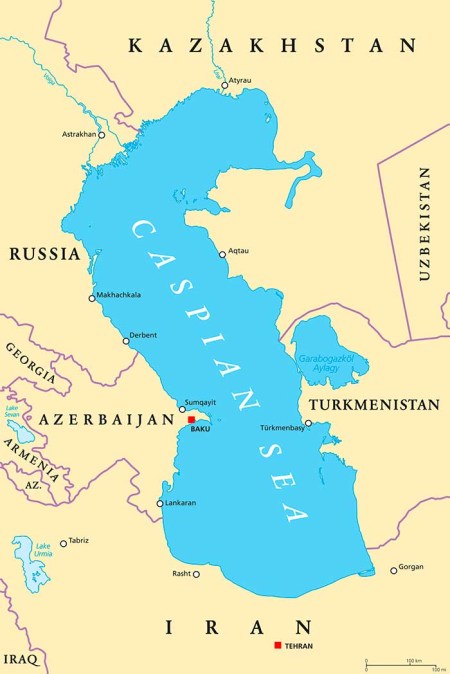Turkmenistan Is Booming: Why?
GDP Growth At 6.2%, Massive Energy Reserves And A Move To A Digital World Are Bringing Turkmenistan Into The Central Asian Future Rather Than Its Past
Turkmenistan has been rattling along with GDP growth rates of 6.2% during 2022, with the country able to take advantage of high gas prices, with Turkmenistan rich in oil and especially natural gas resources. According to official figures, Turkmenistan’s resource base is approximately 71.64 billion tons of oil equivalent, including 53 billion tons located in onshore fields and 18.21 billion tons in the Caspian Sea. Turkmenistan holds 265 trillion cubic feet (Tcf) of proven gas reserves. This ranks it 44th globally in terms of oil reserves and 6th in gas reserves. Naturally, higher energy prices during 2022 have been a boost to its economy – and to others, such as Kazakhstan, in Central Asia.
China is a major client, with exports (primarily gas) rising 36% during 2022. Talks are also under way to advance the Turkmenistan-Afghanistan-Pakistan-India (TAPI) gas pipeline project. Progress on this important project depends on relations with Afghanistan, however current relations appear relatively stable.
According to the latest European Reconstruction & Development Bank (ERDB) report, real gross domestic product (GDP) grew by 6.2 percent year on year from January to September 2022, as the country’s exports added 50% in the first half of 2022 thanks to higher gas prices.
The EBRD believes that Turkmenistan’s external positions have significantly strengthened. Increased gas prices are likely to further boost government revenues, contributing to the country’s borrowing capacity.
Turkmenistan is also developing trade and transport relations with its neighbours, and has recently signed up to be an official partner of the INSTC, which helps transit goods from Central Asia to the Middle East, South Asia and Europe. The country has agreed to develop bilateral trade, simplify the visa regime and ensure better transport connectivity with its neighbors, and the recently signed agreement on the construction of the China-Kyrgyzstan-Uzbekistan railway corridor opens up further opportunities for Turkmenistan as a transit hub to Europe via Türkiye and to India via Iran, the bank’s report says.

This is illustrated by Turkmenistan’s transit trade volumes with Azerbaijan, its Western neighour across the Caspian Sea, increasing by 620% this year. Goods from China and Central Asia are shipped to Azerbaijan’s Baku Port and onto Turkiye and European Ports in Bulgaria and Romania. The same is true of EU exports to China, with Turkmenistan developing as a key transit hub – as Chinese logistics and transportation companies have noticed.
Turkmenistan is also embracing the new digital economy, with the digitalisation agenda promoted through a government programme. Signed in August 2021, a new government programme seeks to promote the development of information technology products by the country’s small and medium-sized enterprises (SMEs). The programme includes such instruments as subsidised loans to SMEs as well as measures to support the demand for domestically produced software products and equipment, meaning that with support from both Russia and China, the country is incorporating and transiting to a digital economy.
An example of this, and of the countries wealth now trickling down to it consumer base, is that ATM card usage – and terminals – have doubled. That frees up purchaing power among the 6 million Turkmen residents and greatly assists with domestic consumer growth.
Meanwhile, the capital, Ashgabat, is developing into a Smart City with Russian infrastructure and technological investment. Turkmenistan, long an isolated, desert outpost, is finding itself in the right place, with the right commodities to sell, at the right time.
Related Reading





